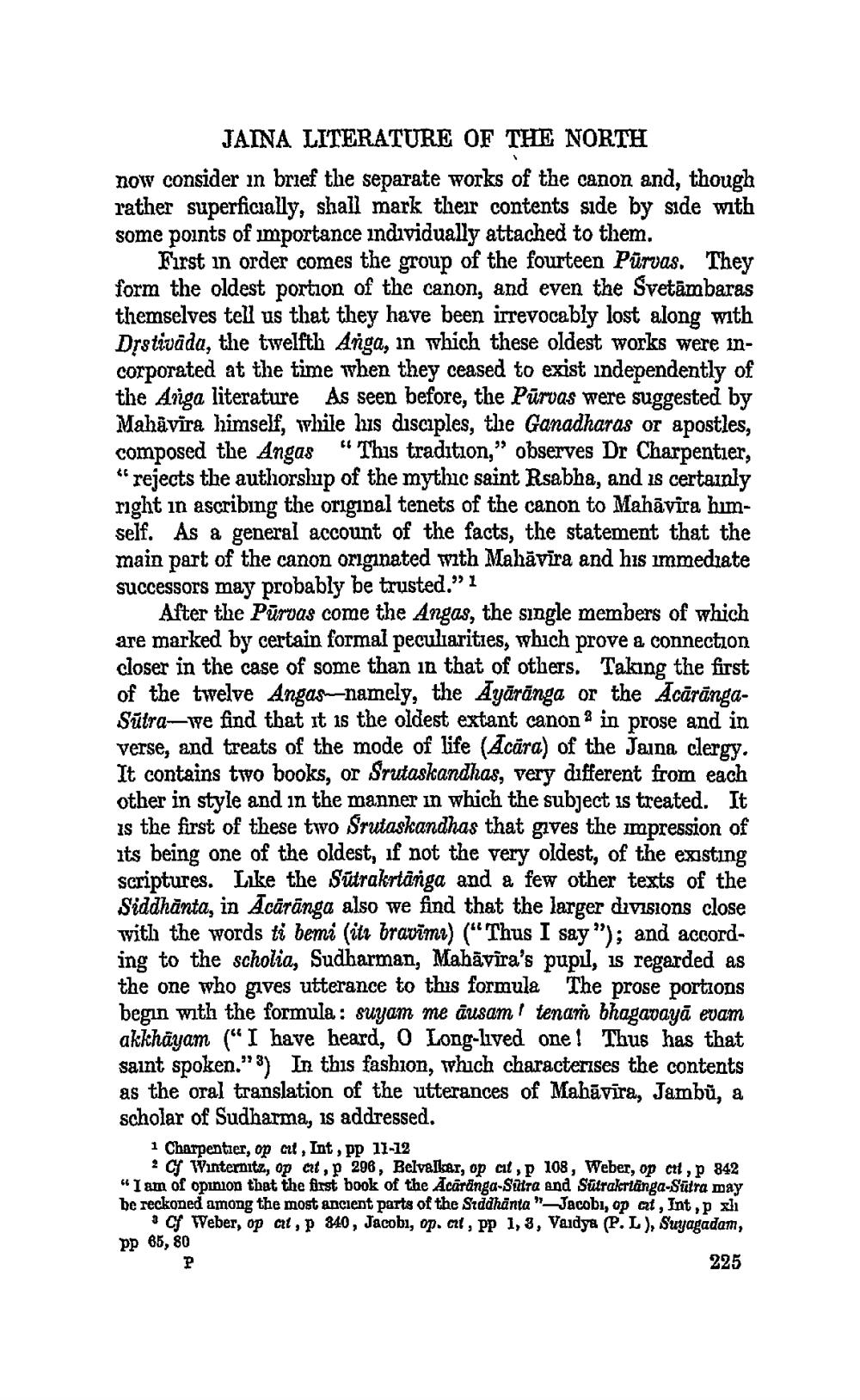________________ JAINA LITERATURE OF THE NORTH now consider in brief the separate works of the canon and, though rather superficially, shall mark their contents side by side with some points of importance individually attached to them. First in order comes the group of the fourteen Purvas. They form the oldest portion of the canon, and even the Svetambaras themselves tell us that they have been irrevocably lost along with Drstivada, the twelfth Anga, in which these oldest works were incorporated at the time when they ceased to exist independently of the Ariga literature As seen before, the Purvas were suggested by Mahavira himself, while lus disciples, the Ganadharas or apostles, composed the Angas "This tradition," observes Dr Charpentier, "rejects the authorshup of the mythic saint Rsabha, and is certainly right in ascribing the original tenets of the canon to Mahavira humself. As a general account of the facts, the statement that the main part of the canon originated with Mahavira and his immediate successors may probably be trusted." 1 After the Purvas come the Angas, the single members of which are marked by certain formal peculiarities, which prove a connection closer in the case of some than in that of others. Taking the first of the twelve Angas-namely, the Ayaranga or the AcarangaSutra-we find that it is the oldest extant canon in prose and in verse, and treats of the mode of life (Acara) of the Jaina clergy. It contains two books, or Srutaskandhas, very different from each other in style and in the manner in which the subject is treated. It is the first of these two Srutaskandhas that gives the impression of its being one of the oldest, if not the very oldest, of the existing scriptures. Like the Sutrakrtanga and a few other texts of the Siddhanta, in Acaranga also we find that the larger divisions close with the words ti bemi (ita bravimi) ("Thus I say "); and according to the scholia, Sudharman, Mahavira's pupil, is regarded as the one who gives utterance to this formula The prose portions begin with the formula: suyam me ausam! tenan bhagavaya evam akkhayam ("I have heard, O Long-lived one! Thus has that saint spoken." 3) In this fashion, which characterises the contents as the oral translation of the utterances of Mahavira, Jambu, a scholar of Sudharma, is addressed. 1 Charpentier, op cit, Int , pp 11-12 PC Winternita, op cit, 296, Belvalkar, op cit, 108, Weber, op cul, p 842 "I am of opinion that the first book of the Acaranga-Sutra and Sutrakrtanga-Sura may be reckoned among the most ancient parts of the Siddhanta "-Jacobi, op at , Int ,p xh CY Weber, op at, 840, Jacobi, op. cit. PP 1, 3, Vaidya (P. L), Suyagadam, pp 65, 80 225




